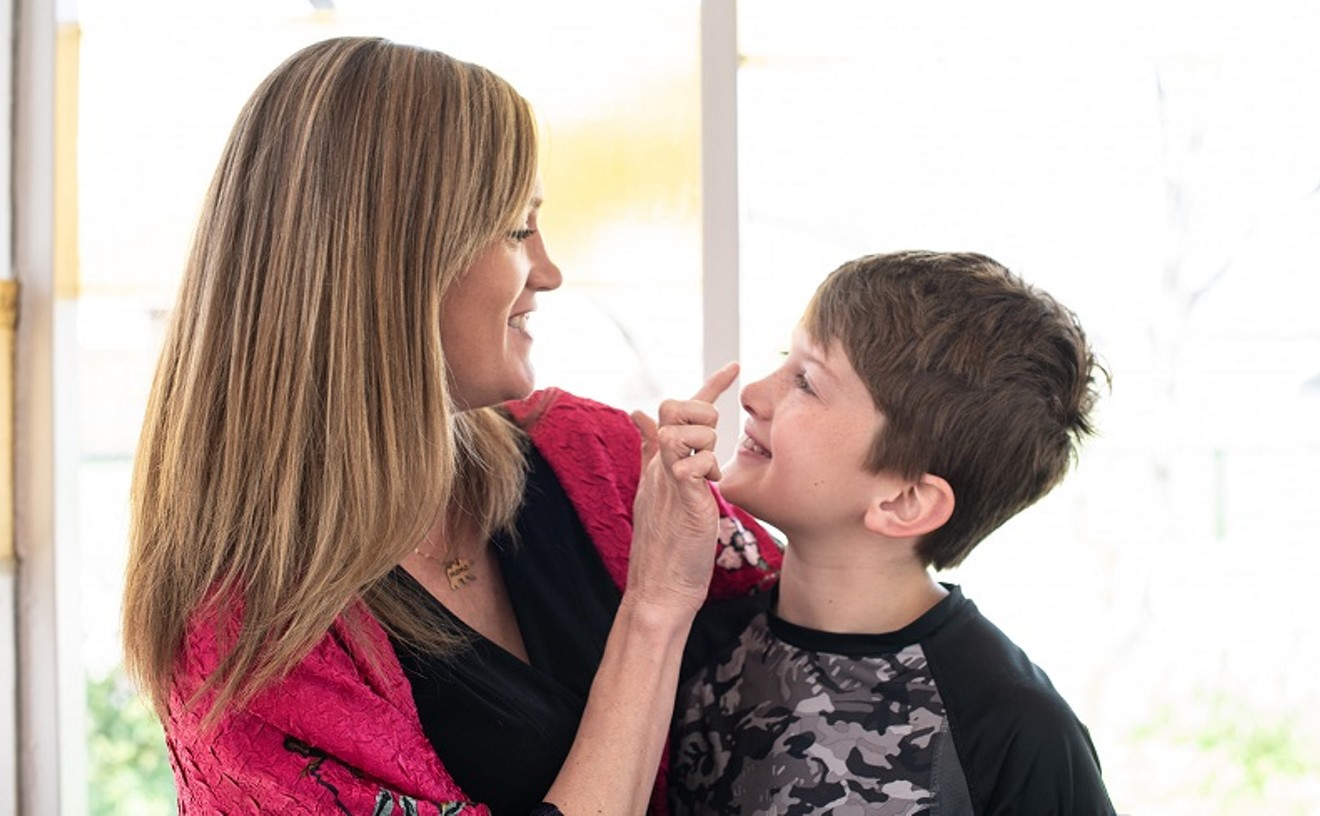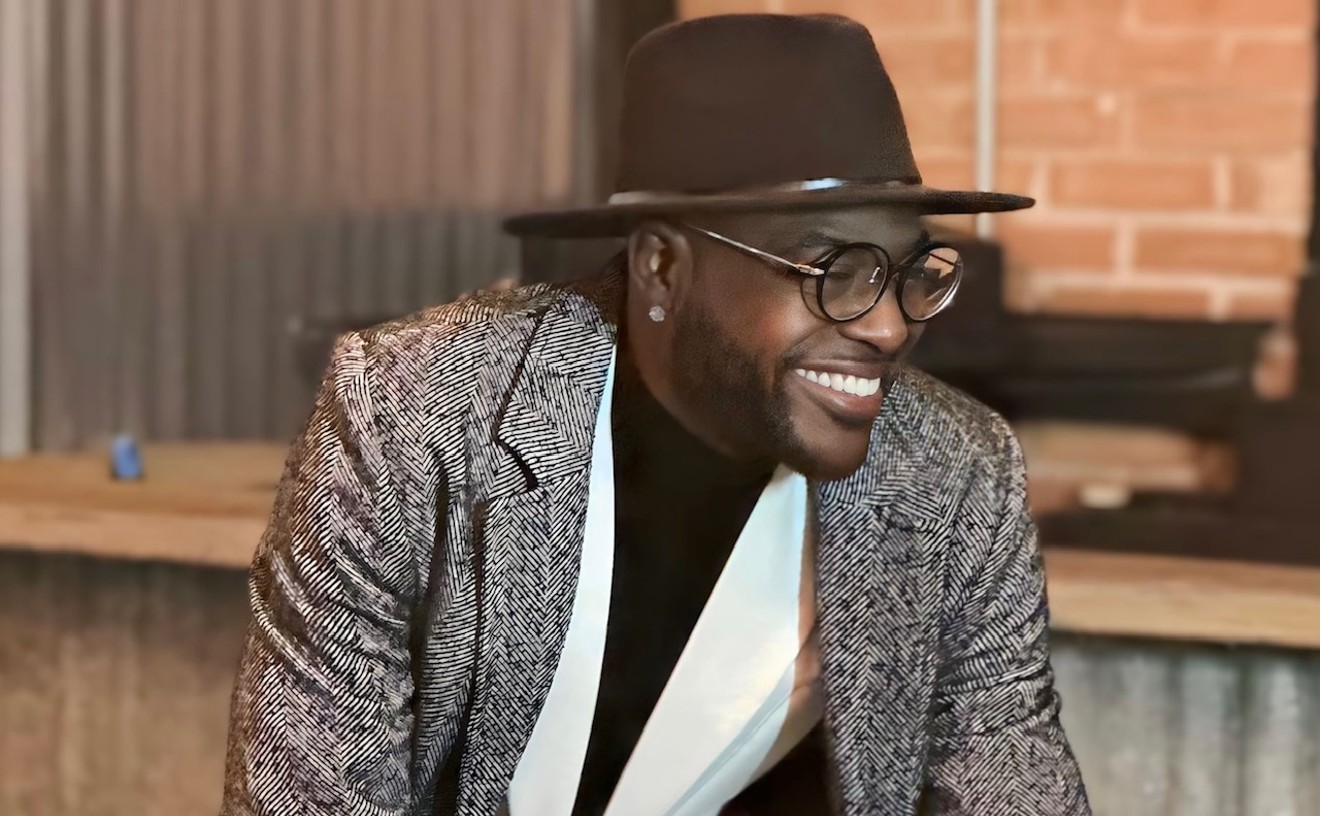They set the bar high, perhaps too high, on this one. Classical went ahead with the production even after it became clear that the troupe's move from Richland College's black box theater, where they've been for the past few seasons, to Plano's Arts Centre Theatre was going to stretch them thin. Company founders Matthew and Emily Gray publicized their need for cash this summer. They raised $22,000, mostly from other theater folk in the area, including donations from the cast of Salesman, who waived $11,000 in their own acting pay to get the curtain up.
There were irrefutable artistic and moral imperatives for doing this play, according to the Grays. It was needed. There hadn't been a professional Death of a Salesman on a local stage in years. Devoted to producing serious old titles actors love to add to their résumés, Classical was determined to take this one on as a noble endeavor. In their note in the Salesman playbill, the Grays also state that this country's "questionable economic stability" makes the play "resonate more."
Well, as to the artistic imperative, it's arguable how much anyone needs to see a small company put on one of American theater's bleakest and most depressing works. Salesman is undeniably an epic downer. (Classical insists on foisting large doses of theatrical medicine on their audiences. After Salesman, they're doing A Doll's House, Tartuffe and Cyrano de Bergerac.)
As to the second point about Salesman's resonance, it remains to be seen whether theatergoers in Republican-packed Plano--a city with a median family income of $92,000 and new homes averaging $200,000, according to recent mortgage banking statistics--will find enough to relate to in the play's anti-capitalist depiction of the downfall of a working man in the late 1940s who invests his heart and faith in the American dream and ends up jobless, broke and suicidal.
Even if it's not the right play at the right time in the right place, this Death of a Salesman could have made its mark with the casting of the right actor as Willy Loman. This role makes or breaks the evening. Think of Willy and remember the greats who've made the part their own: the leonine Lee J. Cobb on Broadway and on television; Dustin Hoffman, also in a televised version; and most recently, Brian Dennehy in the Goodman Theater's Tony-winning Broadway production in 1999. Hoffman was an oddball choice, for sure, but he imbued Willy with a twitchy touch of the short-man complex. The other two fit Arthur Miller's mold for the character--top-heavy, awkwardly built men just heading over the hill past middle age.
Classical Acting has less-than-leonine Equity actor Bradley Campbell. Bearing an unfortunate resemblance to cartoon dad Homer Simpson, Campbell creates neither a strong physical silhouette for Willy Loman nor a sympathetic portrayal of a damaged, disillusioned martyr to corporate greed. Willy's a hulking sad sack in his 60s, at the end of his selling career and his mental tether. Campbell looks a decade younger, and instead of playing Willy as a man on the verge of a nervous breakdown, he seems closer to the advanced stages of Alzheimer's. All the symptoms are evident: forgetfulness, car accidents, confusion about time and place, sudden angry outbursts. In Campbell's approach, it's not a long rest or a better job that Willy Loman needs, it's a bed in a nursing home.
Death of a Salesman is written to be played in a dream state--Willy's dream. Present and past happen concurrently. Scenes from decades earlier unfold in the Loman household among Willy, his loyal and loving wife Linda and their sons, Biff and Happy (Mike Schraeder). These are not flashbacks. In Willy's shattered mind, they are as real as if they're happening for the first time. We watch Willy's undoing from inside his head. The secret to making clear to the audience the difference between past and present, real and unreal, lies primarily in the ability of the lead actor to take us there. Here again Campbell doesn't finesse the nuances. His big emotions are too big, his crying scenes too blubbery. And we don't see in the younger Willy any of the friendly bluster that would let us believe that for a time he really was a successful peddler of goods up and down New England.
Complicating all of it, Miller allows for no transitions between scenes. To help denote the timebends (a word Miller used to title his autobiography), lighting and scenic designers must work some magic. Classical's Salesman is marred by designer Russell Dyer's sloppy, unfocused lighting plot. He divides the small Arts Centre stage into three pools of stark white illumination separated by gulfs of shadows in which actors' faces frequently get lost. The set by Jennifer Owen tries for stark minimalism but ends up as an eye-straining black hole (black floor, black walls) swallowing up thrift-store furniture.
Worse than lighting and set is Christina Dickson's costuming. Even a bad salesman owns a good suit, but the ill-fitting pants, vest and coat Dickson puts Campbell in tug tightly, bunching around his bulky frame. Linda's funeral dress droops a foot lower in front. The slinky slip worn by The Woman (Heather Henry), a floozy with whom Willy has an out-of-town affair, has a visible rip in the back seam.
Adding to these distractions, large and small, are the accents. The play is set in a working-class neighborhood in Brooklyn, but Classical's Lomans speak as if they're transplants from Beacon Hill. They "pahk" their "cahs" and lose their R's all over the place. (Matt Tomlanovich is credited as "voice coach.")
Now to what elevates this Salesman above its many flaws. Susan Sargeant, one of Dallas theater's leading directors, turns in a searing performance as Linda. The moments when this production shows potential for greatness find Linda at the kitchen table, telling Biff and Happy that Willy "is a human being, and a terrible thing is happening to him." Her voice dark with pain and worry, this Linda becomes the most tragic figure in the piece. She's the one who's made sure the bills were paid and the roof didn't leak. And she has been taken terribly for granted by her children and by the man whose silly family mythology about sons with great futures and sales orders that will make them rich she had the good grace not to puncture.
Then there's Clay Yocum as Biff, the former high school football hero who has failed at life. Yocum is the most exciting young actor to appear on Dallas stages this year (he was a stunner in WaterTower's Take Me Out), and he's so affecting in this role, he tips the weight of the play away from the troubled father and toward Biff, who falls apart under the weight of his family's persistent lies. Begging Willy to see and speak the truth, Yocum's Biff is a man-child spewing adolescent rage mixed with a terrible longing for his father's love and acceptance. In this Death of a Salesman, it is the boy named Biff to whom most of the attention must be paid.










